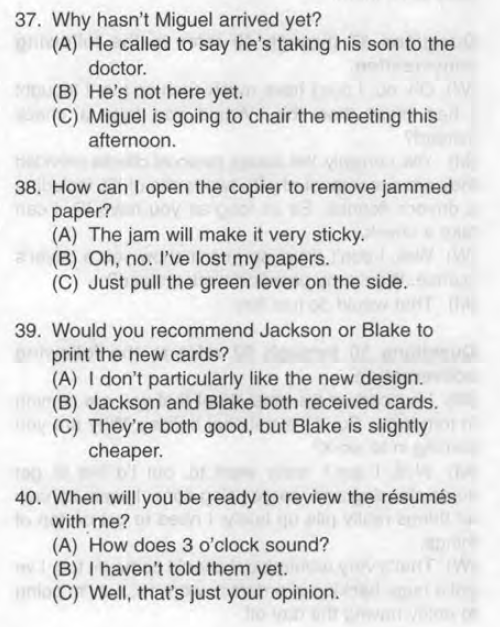หน้าที่ของ Relative Clause คือ
1. เพิ่มความ หรือความหมายให้แก่คำนามหรือคำสรรพนาม
(มาแทน แล้วมาขยายคำ ๆ นั้น)
2. เชื่อมความระหว่าง 2 ความมาไว้ในประโยดเดียว
แล้วความ 2 ความนั้นหมายถึงอะไร
โดยปกติแล้ว relative clause เราจะรู้จักกันในนามประโยค "ที่ ซึ่ง อัน"
ซึ่งเกิดจาก 2 ประโยค เอามารวมไว้ในประโยคเดียว
2 ความ ก็คือ 2 ประโยค นั่นเอง
อธิบายเรื่อง relative clause แบบเป็นขั้น ๆ
 |
| คลิกที่รูปเพื่อขยายให้ดูชัดเจนยิ่งขึ้น |
สรุปเรื่อง relative clause ให้อ่านรอบแรกว่า
Relative Clause เป็นการระบุหรือพูดถึงคน ๆ ไหน หรือสิ่ง ๆ ใด ด้วยการใช้ relative pronoun (เช่น who, which, that, whose, of which เทียบกับภาษาไทยว่า ที่ ซึ่ง อัน) มาแทนคำที่จะระบุนั้น ๆ
หลักการของ Relative Pronoun
1. ทำหน้าที่แทนและเป็นประธานของประโยคย่อย
2. มีความหมายว่า ที่ ซึ่งอัน
3. เอากริยาประโยคย่อยมาใช้ได้เลย
วิธีการใช้ Relative Pronoun
1. ทำหน้าที่แทนและเป็นประธานของประโยคย่อย
2. มีความหมายว่า ที่ ซึ่งอัน
3. เอากริยาประโยคย่อยมาใช้ได้เลย
วิธีการใช้ Relative Pronoun
 |
| คลิกที่รูปเพื่อขยายให้ดูชัดเจนยิ่งขึ้น |
ตารางช่วยจำวิธีการใช้ Relative Pronoun
 |
| คลิกที่รูปเพื่อขยายให้ดูชัดเจนยิ่งขึ้น |
ตัวอย่างการสร้างประโยค Relative Clause
ตัวอย่างที่ 1 ขยายแบบเป็นประธาน
ประโยคที่ 1 The dryer is on the table.
ประโยคที่ 2 The dryer is out of order.
ประโยค 2 ประโยคคือ
1.ไดร์เป่าผมวางอยุ่บนโต๊ะ
2. ไดร์เป่าผมเสีย
เรากำลังจะเชื่อมให้กลายเป็น ไดร์เป่าผมที่วางอยุ่บนโต๊ะเสีย
ในประโยคย่อย The dryer is out of order. (ไดร์เป่าผมเสีย) นั้น the dryer เป็นประธาน เมื่อจะเอาไปขยายประโยคที่ 1 ก็ต้องขยายแบบประธานที่เป็นสิ่งที่ไม่ใช่คน จึงต้องใช้ which แทน ดังนี้
The dryer which is on the table is out of order.
ตัวอย่างที่ 2 ขยายแบบเป็นกรรม
ประโยคที่ 1 The dryer is on the table.
ประโยคที่ 2 I use the dryer every day.
ประโยค 2 ประโยคคือ
1.ไดร์เป่าผมวางอยุ่บนโต๊ะ
2. ฉันใช้ไดร์เป่าผมทุกวัน
เรากำลังจะเชื่อมให้กลายเป็น ไดร์เป่าที่ฉันใช้ทุกวันวางอยุ่บนโต๊ะเสีย
ในประโยคย่อย I use the dryer every day. (ฉันใช้ไดร์เป่าผมทุกวัน) นั้น the dryer เป็นกรรม เมื่อจะเอาไปขยายประโยคที่ 1 ก็ต้องขยายแบบกรรมที่เป็นสิ่งที่ไม่ใช่คน จึงต้องใช้ which แทน ดังนี้
The dryer which I use every day is on the table.
ซึ่งคำว่า I use every day จะตามหลัง which มาคั่นหลัง the dryer ทันที แล้วค่อยตามมาด้วย is on the table.
ซึ่งคำว่า I use every day จะตามหลัง which มาคั่นหลัง the dryer ทันที แล้วค่อยตามมาด้วย is on the table.
ตัวอย่างที่ 3 ขยายแบบแสดงความเป็นเจ้าของ
ประโยคที่ 1 The driver is my cousin.
ประโยคที่ 2 His car was stolen last week.
ประโยค 2 ประโยคคือ
1. คนขับรถคือเป็นพี่ลูกน้องของฉัน
2. รถยนต์ของเขาถูกขโมยเมื่ออาทิตย์ที่แล้ว
เรากำลังจะเชื่อมให้กลายเป็น คนขับรถคนที่รถยนต์ (ของเขา) ถูกขโมยเมื่ออาทิตย์ที่แล้วเป็นลูกพี่ลูกน้องของฉัน
ในประโยคย่อย His car was stolen last week. (รถยนต์ของเขาถูกขดมยเมื่ออาทิตย์ที่แล้ว) นั้น his car แสดงความเป็นเจ้าของให้ driver เมื่อจะเอาไปขยายประโยคที่ 1 ก็ต้องขยายแบบแสดงความเป็นเจ้าของที่เป็นคน จึงต้องใช้ whose แทน ดังนี้
The driver whose car was stolen last week is my cousin.
ซึ่งคำว่า whose car จะตามหลัง driver แล้วตามด้วย was stolen last week ทันที แล้วค่อยตามมาด้วย is my cousin.
ทำแบบฝึกเรื่อง Relative Clause กันนะจ๊ะ
ชื่อผู้สอน: rapassak.hetthong
ซึ่งคำว่า whose car จะตามหลัง driver แล้วตามด้วย was stolen last week ทันที แล้วค่อยตามมาด้วย is my cousin.
ทำแบบฝึกเรื่อง Relative Clause กันนะจ๊ะ
ชื่อผู้สอน: rapassak.hetthong















